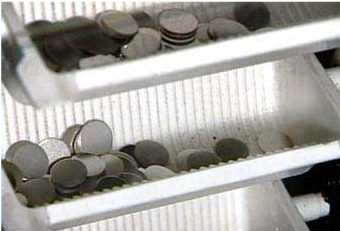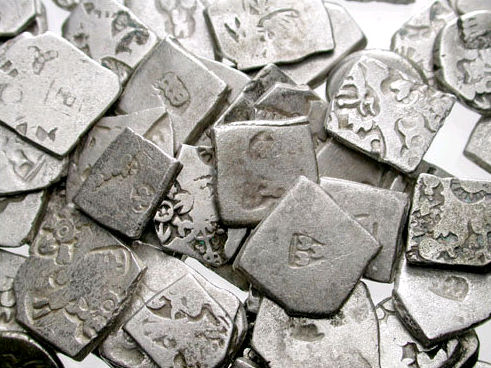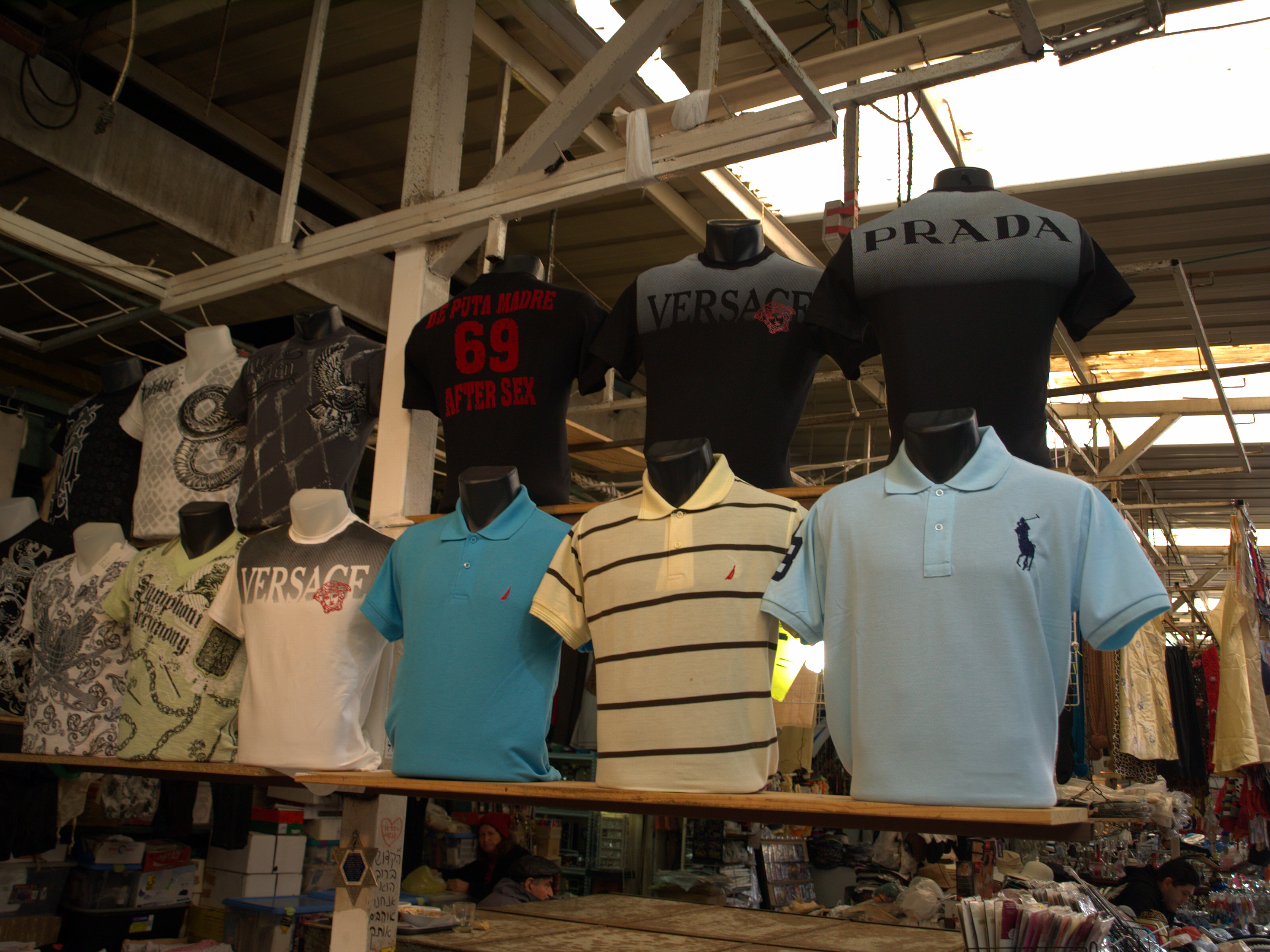|
Planchet
A planchet is a round metal disk that is ready to be struck as a coin. An older word for planchet is flan. They are also referred to as blanks. History The preparation of the flan or planchet has varied over the years. In ancient times, the flan was heated before striking because the metal that the coin dies were made of was not as hard as dies today, and the dies would have worn faster and broken sooner had the flan not been heated to a high temperature to soften it. An unusual method was used to mint the one-sided, bowl-shaped ''pfennigs'' of the Holy Roman Empire. The planchet used for these so-called '' Schüsselpfennigs'' was larger than the coin die itself. The coins were made by striking with only one upper die on the larger planchet. As a result, the perimeter of the planchet was pressed upwards in the shape of a bowl or plate. Until the 18th century they were minted mainly in the Harz Mountains. The curved shape of the pfennig was very useful for handling small chan ... [...More Info...] [...Related Items...] OR: [Wikipedia] [Google] [Baidu] |
Coining (mint)
Minting, coining or coinage is the process of manufacturing coins using a kind of stamping, the process used in both hammered coinage and milled coinage. This "stamping" process is different from the method used in cast coinage. A coin die (archaically spelt dye) is one of the two metallic pieces that are used to strike a coin, one per each side of the coin. A die contains an inverse version of the image to be ''struck'' on the coin. ''Striking'' a coin refers to pressing an image into the blank metal disc, or planchet, and is a term descended from the days when the dies were struck with hammers to deform the metal into the image of the dies. Modern dies made out of hardened steel are capable of producing many hundreds of thousands of coins before they are retired and defaced. Scissel is the scrap produced in the punching of coin blanks from a continuous strip of metal. Ancient coin dies Prior to the modern era, coin dies were manufactured individually by hand by arti ... [...More Info...] [...Related Items...] OR: [Wikipedia] [Google] [Baidu] |
Coin Die
Mint (coin), Minting, coining or coinage is the process of manufacturing coins using a kind of stamping (metalworking), stamping, the process used in both hammered coinage and milled coinage. This "stamping" process is different from the method used in cast coinage. A coin die (archaically spelt dye) is one of the two metallic Die (manufacturing), pieces that are used to strike a coin, one per each side of the coin. A die contains an inverse version of the image to be ''struck'' on the coin. ''Striking'' a coin refers to pressing an image into the blank metal disc, or planchet, and is a term descended from the days when the dies were struck with hammers to deform the metal into the image of the dies. Modern dies made out of hardened steel are capable of producing many hundreds of thousands of coins before they are retired and defaced. Scissel is the scrap produced in the punching of coin blanks from a continuous strip of metal. Ancient coin dies Prior to the modern era, coin ... [...More Info...] [...Related Items...] OR: [Wikipedia] [Google] [Baidu] |
Mint (coin)
A mint is an industrial facility which manufactures coins that can be used as currency. The history of mints correlates closely with the history of coins. In the beginning, hammered coinage or cast coinage were the chief means of coin minting, with resulting production runs numbering as little as the hundreds or thousands. In modern mints, coin dies are manufactured in large numbers and planchets are made into milled coins by the billions. With the mass production of currency, the production cost is weighed when minting coins. For example, it costs the United States Mint much less than 25 cents to make a quarter (a 25 cent coin), and the difference in production cost and face value (called seigniorage) helps fund the minting body. Conversely, a U.S. penny ($0.01) cost $0.015 to make in 2016. History The first minted coins The first mint was likely established in Lydia in the 7th century BC, for coining gold, silver and electrum. The first coins known to be minted on E ... [...More Info...] [...Related Items...] OR: [Wikipedia] [Google] [Baidu] |
Pfennig
The pfennig (; . 'pfennigs' or 'pfennige' ; currency symbol, symbol pf or ₰) or penny is a former Germany, German coin or note, which was an official currency from the 9th century until the introduction of the euro in 2002. While a valuable coin during the Middle Ages, it lost its value through the years and was the minor coin of the Mark (money), Mark currencies in the German Reich, West Germany and East Germany, and the German reunification, reunified Germany until the introduction of the euro. Pfennig was also the name of the subunit of the Danzig mark (1922–1923) and the Danzig gulden (1923–1939) in the Free City of Danzig (modern Gdańsk, Poland). Overview Name The word ''Pfennig'' (replacing the ''denarius'' or ''denarius'' as a low-denomination silver coin) can be traced back to the 8th century and also became known as the ''Penning'', ''Panni(n)g '', ''Pfenni(n)c'', ''Pfending'' and by other names, e.g. in Prussia until 1873, ''Pfenning''. The ''-ing''- ... [...More Info...] [...Related Items...] OR: [Wikipedia] [Google] [Baidu] |
Coining Press
A coining press is a manually operated machine that mints coins from planchets. After centuries it was replaced by more modern machines. Presses came in multiple shapes and with different accessories (to collect the coins, etc.) They were made of cast iron. The basic elements are: * A triumphal arch with a built-in base * A vertically arranged leadscrew A leadscrew (or lead screw), also known as a power screw or translation screw,Bhandari, p. 202. is a screw used as a linkage in a machine, to translate turning motion into linear motion. Because of the large area of sliding contact between ... that supported an inertia wheel or more commonly, a piece made up of two radial arms with weights at the ends. * The leadscrew (male) rotates inside a threaded (female) nut. The nut is attached to the structure. The turn of the inertia wheel (or bar with weights) determines the rotation of the thread bar and its vertical displacement (up or down depending on the direction of rota ... [...More Info...] [...Related Items...] OR: [Wikipedia] [Google] [Baidu] |
Schüsselpfennig
A Schüsselpfennig ("dish ''pfennig''"), also ''Gehulchter Pfennig'' ("hollow ''pfennig''") is so called due to the stamping technique which results in a wikt:concave, concave, one-sided type of ''Pfennig'' coin. It was probably first minted in 1374 in the Palatinate (region), Palatinate. Small ''Schüsselpfennigs'' that had entered the Electorate of Saxony were referred to there as ''Näpfchenheller'' ("saucer ''hellers''"). History The ''Schüsselpfennig'' was widespread and can even be found in dictionaries described as a "small one-sided pfennig made of silver with a rim that is curved upwards like a dish". It was manufactured by minting using only one, upper, stamp on a larger planchet. When the ''pfennig'' was stamped, its edge was pressed upwards in the shape of a bowl or dish. The convex shape of the ''pfennigs'' proved to be very practical in payment transactions because the small coins were easier to grip than their flat counterparts. The forerunners of the ''Sch ... [...More Info...] [...Related Items...] OR: [Wikipedia] [Google] [Baidu] |
Flans
Flans are a Mexican music group, which enjoyed popularity from the mid-1980s to the mid 2020s. Its members were the singers Ivonne Margarita Guevara García, Ilse María Olivo Schweinfurth and Irma Angélica Hernández Ochoa. They were generally known as Ivonne, Ilse, and Mimí. Career Beginnings The three girls were initially cast in the mid-1980s for a TV show to be called ''Fans'', which was to feature chats and sing-alongs with guest stars. When plans for the show fell through, a project was started to turn the girls into a pop music sensation. The group was renamed Flans and their first album, ''Flans'', was launched in 1985. Their style was mainly pop music and ballads although one of their albums (''Cuéntamelo Dum-Dum'') was somewhat child-oriented. First breakup The group released a new album every year until 1991 when they separated, with a national tour and the release of their "last" album: ''Adiós''. After their separation, Ivonne married and devoted herself ... [...More Info...] [...Related Items...] OR: [Wikipedia] [Google] [Baidu] |
Punch-marked Coins
Punch-marked coins were a type of karshapana or Ancient Indian coinage, also known as ''Aahat'' (''stamped'') ''coins'', dating to between about the 6th and 2nd centuries BC. It was of irregular shape. These coins are found over most parts of subcontinent and remained in circulation till the early centuries CE. History Janapada Coins The study of the relative chronology of these coins has successfully established that the first punch-marked coins initially only had one or two punches, with the number of punches increasing over time. 19th-century proposals which suggested an origin from as early as 1000 BC, independent of the introduction of coins in Asia Minor, are "no longer given any credence". According to Osmund Bopearachchi, the first punch-marked coins in the Indian Subcontinent may have been minted around the 6th century BC by the Mahajanapadas of the Indo-Gangetic Plain. These coins were produced by impressing single punches individually. According to E. J. R ... [...More Info...] [...Related Items...] OR: [Wikipedia] [Google] [Baidu] |
Counterfeit
A counterfeit is a fake or unauthorized replica of a genuine product, such as money, documents, designer items, or other valuable goods. Counterfeiting generally involves creating an imitation of a genuine item that closely resembles the original to deceive others into believing it is authentic. Counterfeit products are often made to take advantage of the higher value of the original product, typically using lower-quality materials or production methods. Counterfeit food, drinks, medicines, and personal care products can contain harmful or inactive ingredients, causing anything from mild issues to serious, life-threatening ones. Counterfeit footwear, clothing, and accessories have been found to contain high levels of lead, arsenic, and phthalates. Forgery of money or government bonds Counterfeit money is currency that is produced without the legal sanction of the state or government; this is a crime in all jurisdictions of the world. The United States Secret Service, mostly ... [...More Info...] [...Related Items...] OR: [Wikipedia] [Google] [Baidu] |
Morgan Dollar
The Morgan dollar is a United States dollar coin minted from 1878 to 1904, in 1921, and beginning again in 2021 as a collectible. It was the first standard silver dollar minted since the passage of the Coinage Act of 1873, which ended the free coining of silver and the production of the previous design, the Seated Liberty dollar. It contained 412.5 Troy grains of 90% pure silver (or of pure silver). The coin is named after its designer, United States Mint Assistant Engraver George T. Morgan. The obverse depicts a profile portrait representing Liberty, modeled by Anna Willess Williams, while the reverse depicts an eagle with wings outstretched. The mint mark, if present, appears on the reverse above between D and O in "Dollar". The dollar was authorized by the Bland–Allison Act. Following the passage of the 1873 act, mining interests lobbied to restore free silver, which would require the Mint to accept all silver presented to it and return it, struck into coin. Inste ... [...More Info...] [...Related Items...] OR: [Wikipedia] [Google] [Baidu] |
Fahrenheit
The Fahrenheit scale () is a scale of temperature, temperature scale based on one proposed in 1724 by the German-Polish physicist Daniel Gabriel Fahrenheit (1686–1736). It uses the degree Fahrenheit (symbol: °F) as the unit. Several accounts of how he originally defined his scale exist, but the original paper suggests the lower defining point, 0 °F, was established as the freezing temperature of a solution of brine made from a mixture of water, ice, and ammonium chloride (a Salt (chemistry), salt). The other limit established was his best estimate of the average human body temperature, originally set at 90 °F, then 96 °F (about 2.6 °F less than the modern value due to a later redefinition of the scale). For much of the 20th century, the Fahrenheit scale was defined by two fixed points with a 180 °F separation: the temperature at which pure water freezes was defined as 32 °F and the boiling point of water was defined to be 212 °F, b ... [...More Info...] [...Related Items...] OR: [Wikipedia] [Google] [Baidu] |







